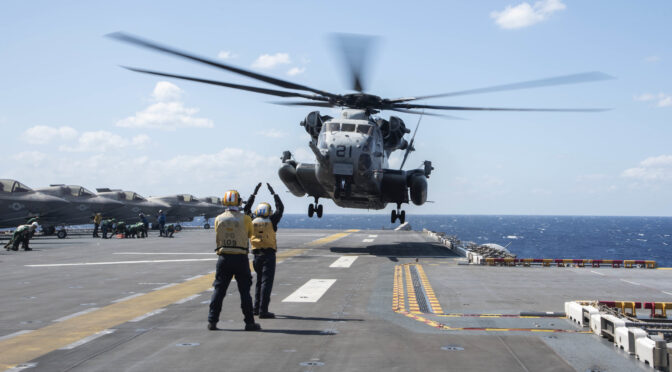Flotilla Tactical Notes Series
By Ed Kaufmann
Navies can improve tactical learning by ensuring they are technologically proficient with their various warfighting systems and platforms. If one does not know how a weapon system or a sensor functions technically, then they may not be able to employ it tactically. Once a warfighter has a grasp of how the underlying technology works, they can use that technical know-how to craft tactical solutions for the threat environment they are operating within. This can include knowing when and where to employ a particular weapon system and to avoid costly tactical mistakes, such as launching an SM-6 at a target when an ESSM would be more practical. Tacticians must understand when technical implications suggest tactics where maximum efficiency is the desired outcome, and to also know when the most efficient method is not always the most effective one.
The tactician should have a working technical knowledge of the various systems and weapons, but not be too immersed in the details. Certain technical details do not readily lend themselves toward tactical implications, and the skilled tactician can discern the difference. Officers need to wear many hats that not only represent their official skillset, but the additional duties that come with their particular rank, i.e., OOD, repair locker, and others. The bulk of especially detailed technical know-how should be left to the enlisted operators.
Skilled naval tacticians are not an inherent result of spending years in the Navy. They must be deliberately developed. Classroom instruction and focused mentoring are excellent, but warfighters have to be able to apply what they have been taught to actual hands-on scenarios or exercises conducted out to sea and in high-fidelity simulators. Tactical skill is primarily a product of learning by doing.
Another way to develop skilled tacticians and advanced tactics is lean on retired naval officers. Most of them would be willing to impart their knowledge and experience to newer personnel, especially Cold War-era experiences that highlight the challenges of a threat environment dominated by great power rivals. Much of that high-end know-how atrophied in the fleet during the past 30 years, and the retired community can help reconstitute it.
Navies must be both technically and tactically proficient so they can understand their systems, adapt their warfighting methods, and dominate any adversary in a conflict.
Ed Kauffman started his military career with the U.S. Navy in 1992, spending eight years as an Avionics Technician in the F-14 radar shop 63A at NAS Oceana Aircraft Intermediate Maintenance Department (AIMD). He made deployments on board USS America (CV-66), USS Theodore Roosevelt (CVN-71), and USS Enterprise (CVN-65). He spent a year in the USNR in VP-64 based at NAS/JRB Willow Grove, PA, and four years in the National Guard. He spent the rest of his career in the U.S. Army as 13F (Forward Observer/Fire Support Specialist) and retired as an SSG (E-6). He graduated from the University of Alaska-Fairbanks in May 2020 with a Master of Security and Disaster Management (MSDM), concentrating in Arctic Security. He is currently a member of CIMSEC’s Warfighting Flotilla, RUSI, RUSI(NS), and other organizations.
Featured Image: EAST CHINA SEA (Oct. 20, 2022) A CH-53 Super Stallion, assigned to Marine Medium Tiltrotor Squadron (VMM) 262 (Reinforced), takes off from the flight deck aboard amphibious assault carrier USS Tripoli (LHA 7). (U.S. Navy photo by Mass Communication Specialist 1st Class Peter Burghart)

